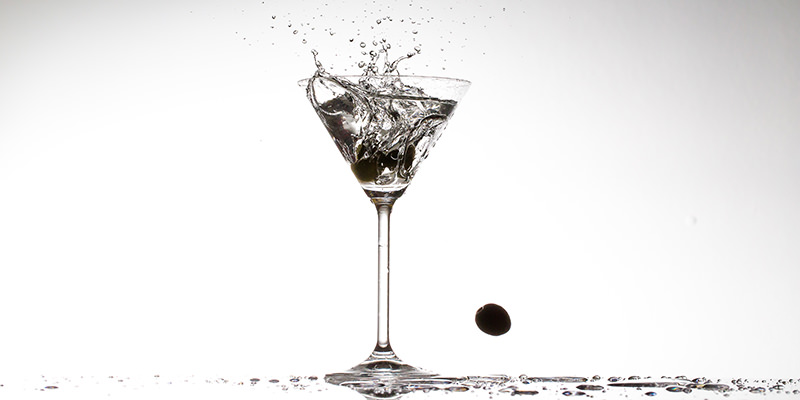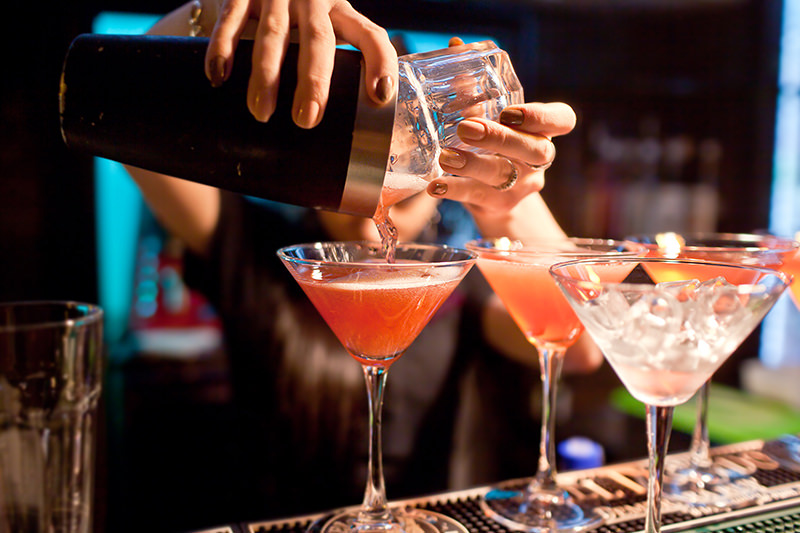You’ve tried it, maybe you failed miserably, or maybe you got a few good revolutions, took a sniff, and then downed the whole glass. Mic drop. Swirling wine, well, it’s a thing.
Whether it’s a necessary thing—or as necessary, or as necessarily aggressive—as some people make it out to be, that’s another story. But on a simple level, gently swirling your glass of wine can help oxygen reach wine beyond the flat surface area in the glass, poking out aromatic molecules and giving you a slightly richer sense of the wine’s bouquet.
Why don’t we do this when we order a cocktail? In fact, why do we do almost the exact opposite? Think of the last time you ordered a Martini, a Margarita, or whatever it is you like to drink after a long week of Pokemon-ing. Especially if you’re in a craft cocktail bar, you’ll see the bartender almost reverently place the drink on a cocktail napkin and very gently slide the drink to you. After all that shaking—or stirring—it seems an odd choice to suddenly avoid agitation at all cost. And if you think about it, you’ve probably also never seen anyone nod “Thanks” to their bartender, pick up their cocktail and give it a hefty swirl.
It’s an interesting distinction, especially if you consider spirits themselves. Whiskey drinkers might give their dram a little dance before taking a sip, but someone holding a Bourbon Old Fashioned isn’t likely to aerate it. Why?
The simple answer: because cocktails are mixtures. The bartender wasn’t rattling his Boston shaker that vigorously just to show off his muscles (though nice one, dude). When a bartender makes a cocktail, he or she is taking a heterogeneous mixture of components—with different densities, viscosities, solubilities—and (politely) asking them to come together in unity and harmony as one homogeneous craft cocktail. Especially with a shaken drink, wherein the bartender essentially creates an equilibrium of ingredients with about 15 seconds of elbow and bicep violence, the goal is total integration. Think about it this way: unless you’ve ordered a Brandy Scaffa, you generally don’t want to see separate layers in your drinks. Mixing is done, either vigorously or lengthily, to create uniform distribution of all the tasty liquids that go into your drink.
Still, why not swirl? Well, for one, the cocktail glass is almost always too full. Seriously, try getting from the bar to your table without spilling some. It’s impossible, and pretty sure the bartender is watching you and laughing. There’s also the fact that most cocktails are served cold, meaning swirling will yield less in the way of aromatics. Unlike red wine, which is best served around 60 to 70 degrees, cocktails are ideal between 14 and 23 degrees (shaken) and 19 and 31 degrees (stirred). Think of it this way: ice cream is best served at around 10 degrees; when’s the last time you’ve gotten a generous bouquet of aromatics from your pint of Half Baked?
It’s not that you won’t get any aromatics from a mixed drink, not at all; unless it’s freezer vodka and sherbet, you’ll get aromatics from every cocktail, distinctive ones. If you were blindfolded and we put a classic Daiquiri and a spicy rye Manhattan in front of you, you’d be able to tell—smell—the difference once the cocktail glasses reached a few inches from your nose. But unlike wine, which we swirl with the intent of parsing (e.g., “I detect lingonberries and horse tears,”), cocktails are mixed with the intent of unifying. Not that your Piña Colada smells like “Piña Colada.” Ideally, it smells a lot like coconut and maybe some detectable rum.
But because the drink is significantly colder, you have to dig a bit deeper. It’s not a matter of oxygen so much as time and proximity; a few sips and degrees Fahrenheit warmer, you might try swirling your cocktail to see what’s newly detectable, though generally speaking, the best way to get aromatics from your cocktail is at the sip. In fact, that’s a large part of how you’re “tasting” the drink in the first place. Each time you bring the drink to your lips, your nostrils will be in the closest proximity to a drink that is otherwise too cold to yield aroma from afar. But that’s kind of the magic of it; once you take that sip, you’ll nose out some of the florals and herbs of the Green Chartreuse; maybe some licorice from the Absinthe rinse in your Sazerac; maybe a hint of cola from the Fernet in your … oh, that’s the shot of Fernet the awesome bartender comped you. Because he is totally into you. Ah, the dream.
Either way, the swirl is best left to wine. For cocktails, the smell is in the sip.


